A Study on Dual-Load-Zone Model of Overlying Strata and Evolution Law of Mining Stress
Yuejin Zhou , Mingpeng Li Xiaoding Xu and Meng Li
Abstract: The changeable structure and movement law of overlying strata are the main contributor to the change of mining stress. Starting from the relevant theory of key stratum and particularly based on the theory of mine ground pressure and strata control,this research proposed a new solution to mining stress problems by establishing a dual-load-zone stratum structural model. Elastic foundation beam theory was used to solve the stress of overlying strata of the dual-load-zones with superposition method,which revised the traditional calculation method of mining stress. The abnormal increase of lead abutment pressure in the mining area was explained effectively, through which the evolution law of mining stress in the case of hard rock was obtained. The results indicate that mining stress experiences a drastic change within the range of 50 m ahead of the coal wall due to the collapse of main roof; under the influence of main key stratum and inferior key strata, the influence range of lead abutment pressure is extended up to approximately 120 m in the working face; this remarkable increase can be attributed to the excessive length of sagging zone. Results from both the dual-load-zone model experiment and field measurement demonstrate high consistency. The model can predict the influence range of abutment pressure effectively and thus guide the safety production of mining.
Keywords: Overlying strata structure, dual-load-zone, mining stress, evolution law.
1 Introduction
Numerous studies and explorations have been conducted on the distribution of abutment pressure in the stope by both domestic and foreign scholars [Qian, Shi and Xu (2010);Jiang (1993); Liu, Jiang and Zhu (2015); Meng (2016)]. In terms of theoretical studies,three theories are mainly employed, namely, limit equilibrium theory, synthetic angle of draw, and elastic foundation beam. For example, Hu, Fan and Wang [Hu (2014)]calculated the limit equilibrium area and elastic area in the front of the stope by means of limit equilibrium theory; on this basis they also analyzed the distribution of abutment pressure in the working face with large mining height and the main influence factors.Based on the analysis of the five phases of abutment pressure formation, Song, Lu and Xia [Song (2006)] established the structural mechanical model of abutment pressure. Li[Li (2005)] maintained that the abutment pressure on the working face is composed of two parts: Stress of primary rock and concentrated mining stress. The former is constant abutment pressure while the latter is caused by the periodic failure of main roof and directly related with the range and extent of the damage on main roof. These studies illustrated the change of mining stress to some degree, but failed to consider the influence of key stratum in the overlying strata on abutment pressure. Particularly, when a main key stratum does exist and is relatively far from the coal seam, these studies could not explain the abnormal lead mining stress in working face. Therefore, this research, based on the previous studies and with No. 8 mine of Pingdingshan Coal Group Co. Ltd. as a case study, established the calculation model of abutment pressure under the influence of main key stratum by means of key stratum theory and elastic foundation beam theory. The purpose of this research was to provide new thinking and methods for solving abutment pressure in mining area.
2 The discrimination of key stratum
2.1 General information of the working face
The 14200 working face of Ding-4 mining area in No. 8 mine of Pingdingshan Coal Group Co. Ltd. is situated in the second level of the mine. Its main coal seam is Ding 5-6,with an average thickness of 2 m. The working face is 175 m long, and its strike length is 1706 m. With a mining height of 2 m, the working face is advanced eastward from the west. The mining of the 14180 working face located to the south has been completed. Fig.1 shows the diagram of the working face. The working face is developed by fully-mechanized mining method, and the roof is maintained by caving method. The immediate roof of the coal seam is sandy mudstone in general; some part of it has a layer of carbonaceous mudstone as local false roof whose thickness is 0-0.2 m; some part of the immediate roof is fine sandstone which contains Ding 4 coal. The immediate floor of the coal seam is sandy mudstone, and the main floor is sandy mudstone and banding fine-medium sandstone, whose lithology is shown in Tab. 1.
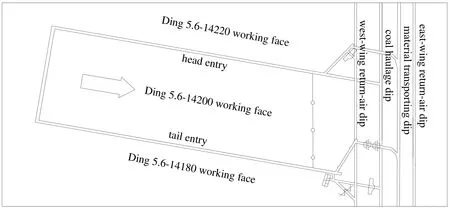
Figure 1: General information of the working face
2.2 The discriminant method of key stratum
With the mining of the working face, the immediate roof falls. As the mining distance increases, the fracture of the overlying key stratum occurs consequently. To study the displacement and movement laws of key stratum as well as its influence on the surrounding rock, the primary task is to locate the key stratum. According to the five characteristics of key stratum, two determining conditions can be obtained [Qian (2003);Liang (2017); Sun and Miao (2017)].
According to the deformation characteristic of key stratum, the first determining condition for deformation can be expressed as:

According to the fracture characteristic of key stratum, the second determining condition for intensity can be expressed as follows:

According to the determining condition for intensity, when the fracture moment satisfies the above formula, the first stratum is inferior key stratum; if it does not, the action of the n+1th stratum as well as its controlling stratum on the nth stratum should be recalculated.
2.3 The discrimination of key stratum in the working face
When discriminating key stratum, the load on every stratum should be calculated first to locate the hard strata. The calculation formula is as follows:

After confirming the location of each hard stratum, it is necessary to confirm whether the hard stratum is key stratum according to the determining condition for intensity. The fracture moment of hard strata can be calculated by the following equation:

According to the actual geological conditions of the 14200 working face and its composite histogram, the location of the overlying key stratum is calculated. The discriminant results are shown in Tab. 1.
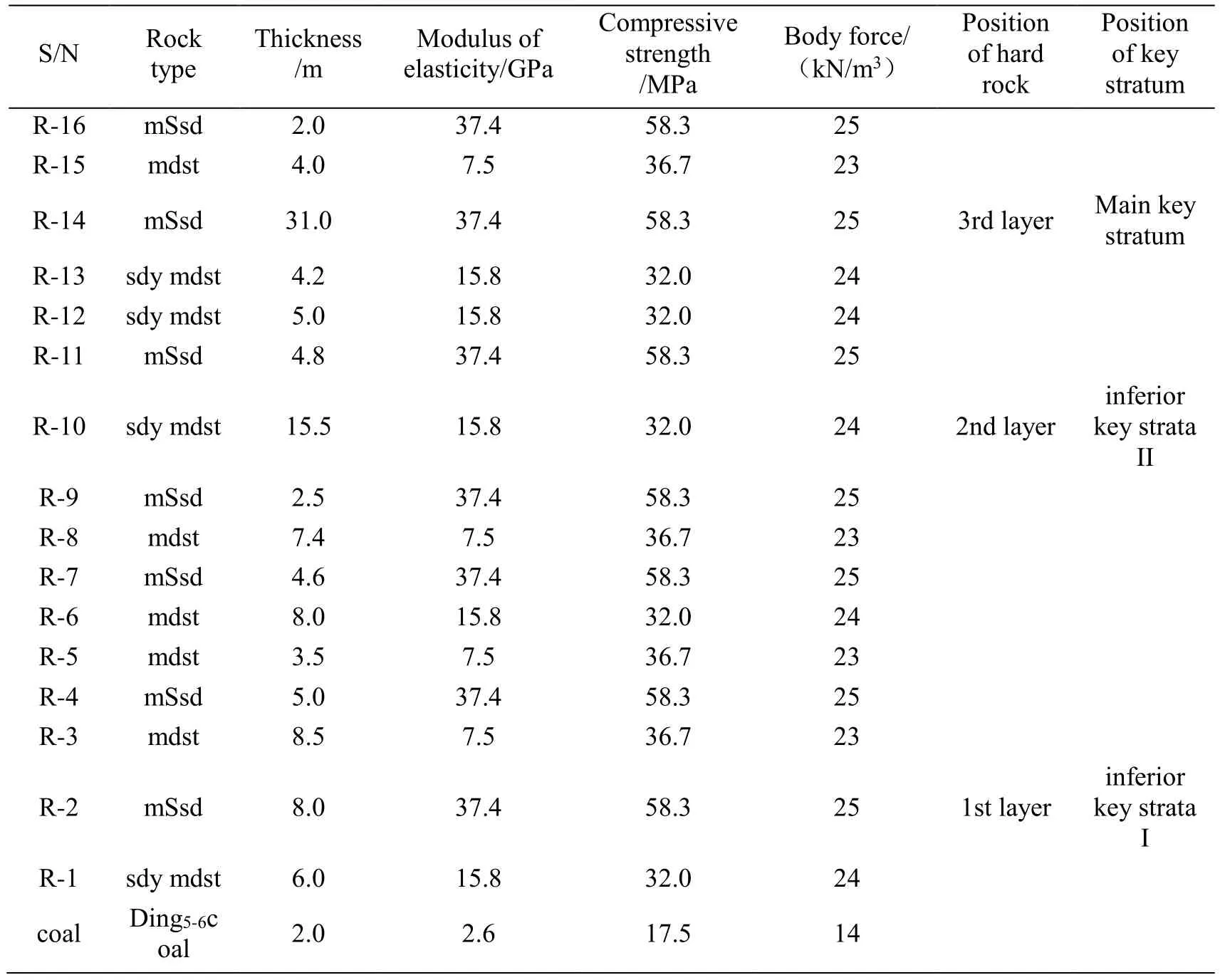
Table1: Discriminant result of key stratum
3 The calculation of abutment pressure under the influence of main key stratum
The main key stratum has a remarkable influence on the distribution of abutment pressure on the working face, which is mainly manifested in the increase of peak value, the enlargement of influence range and so on [Wang (2015); Xie and Xu (2017); Zhang,Zhang, Han et al. (2014); Ren and Ning (2014); Liu, Jiang, Wang et al. (2011); Li, He, Yan et al. (2012)]. Based on the actual geological conditions of the 14200 working face, a calculation model of abutment pressure under the influence of main key stratum was established in this study. Through this calculation model, the influence of main key stratum on the distribution of abutment pressure was analyzed.
3.1 The calculation model of abutment pressure
In light of the actual situation of the 14200 working face after the collapse of overlying strata, a dual-zone calculation model of abutment pressure under the influence of main key stratum was established As is shown in Fig. 2, the abutment pressure under the influence of main key stratum is divided into two parts: abutment pressure caused by sagging zone, and abutment pressure caused by fractured zone. The main key stratum and its overlying strata can be taken as sagging zone. The strata in this zone can be seen as an infinite elastic foundation beam, whose bending causes abutment pressure below main key stratum. The rock mass of fractured zone can be seen as a semi-infinite elastic foundation beam. After the fracture of the strata in fractured zone, the fractured stratum above the goaf exerts additional load and bending action on the unfractured rock mass at the corresponding position above the coal body. Under the joint effect of additional load and bending moment, the rock mass of fractured zone exerts abutment pressure on the corresponding rock mass below. The abutment pressure caused by main roof in the coal seam can be calculated in the same way. It is important to note that this calculation model divides the abutment pressure into two parts: stress of primary rock and abutment pressure caused by the strata displacement after mining. In this study, the former is excluded when calculating. In other words, only the latter (the increase volume of abutment pressure after mining) is calculated. However, for the sake of convenient expression, it is still called as abutment pressure.
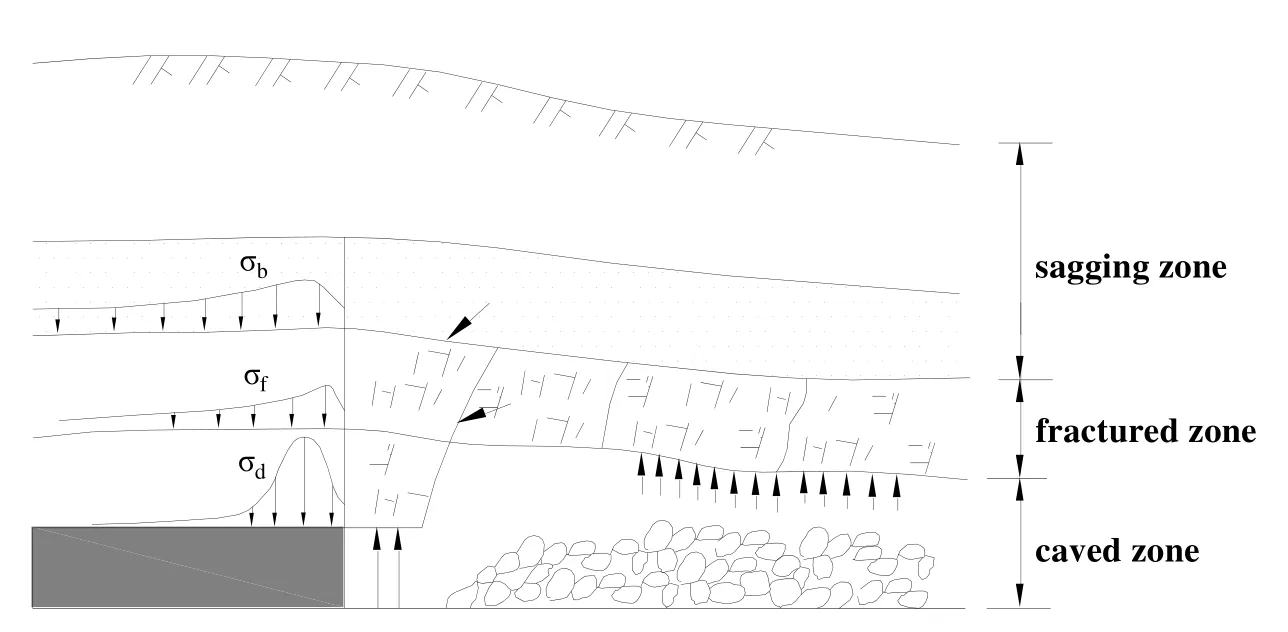
Figure 2: The calculation model of lead abutment pressure
3.2 The analysis of abutment pressure in the two zones
3.2.1 The abutment pressure formed below sagging zone
The bend of rock mass in sagging zone causes abutment pressure on the rock mass below.Suppose that main key stratum is an infinite elastic foundation beam, and then the abutment pressure caused by the bend of the beam can be calculated. The abutment pressure is transferred downward to the coal seam, so it can be taken as the abutment pressure caused by the rock body in sagging zone. The calculation model of abutment pressure in sagging zone is shown in Fig. 3.
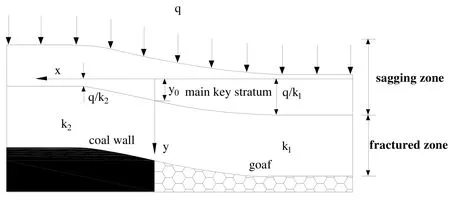
Figure 3: The calculation model of abutment pressure in sagging zone
As is shown in Fig. 3, the direction of coal wall is set as the direction of y axis; the load on the stratum above main key stratum is set as being equivalent to uniform load. The displacement curve below main key stratum is. Under the action of, the beam bending above the coal wall is. The rock mass below main key stratum can be considered as elastic medium which complies with Winkler’s elastic foundation hypothesis. The composite foundation coefficient of the rock mass between main key stratum and goaf isand that of the rock mass between main key stratum and coal wall is. With these parameters, the elastic foundation beam model can be established.
(1) The displacement curve of main key stratum above goaf
According to elastic foundation hypothesis [18-21], the relation between the pressure of sagging zone upon the composite foundation and the corresponding subsidence can be shown as follows:

As for the sagging zone above the goaf, the differential equation of the bending deformation of main key stratum can be expressed as follows:

Through this equation, the displacement curve of main key stratum above goaf can be obtained and shown as Eq. (7):

According to the above equation, the rotation, bending moment, and shear of the main key stratum above goaf can be expressed as follows:

(2) The displacement curve of main key stratum above coal wall
For the infinite elastic foundation beam, the influence of axial force on the beam bending can be ignored. The differential equation of the bending deformation of main key stratum above coal wall (x>0) can be expressed as follows:

Through this equation, the displacement curve of the main key stratum above coal wall can be obtained and shown as Eq. (10):

According to the above equation, the rotation, bending moment, and shear of the main key stratum above goaf can be expressed as follows:

(3) The displacement curve of main key stratum
The following is the boundary conditions for the mechanical model established:

After obtaining relevant coefficients, the displacement curve of main key stratum without considering the action of self-weight can be expressed as follows:

(4) The abutment pressure formed below sagging zone
Based on the elastic foundation beam model, substitute Eq. (13) into Eq. (5), and then the abutment pressure formed below sagging zone can be expressed by the following equation:

3.2.2 The abutment pressure formed below fractured zone
Since there are many strata in fractured zone, they can be divided into many strata groups according to the change of their respective bending stiffness. Calculate the additional load and bending moment of every strata group on the stratum above coal wall and add up the abutment pressure of every strata group, and then the abutment pressure caused by fractured zone in the coal wall can be obtained. Take the ith strata group of fractured zone as an example. The additional load and bending moment exerted on the coal wall after its fracture can be expressed as follows:

Under the action of additional load and bending moment, the abutment pressure on the corresponding position above the coal wall can be expressed as the following equation:

The abutment pressure formed in every strata group can be calculated by Eq. (17), so is the abutment pressure formed below main roof. Since the immediate roof is located within the roof-control area, its influence on abutment pressure is relatively small and thus can be ignored.
3.2.3 The analytical solution of lead abutment pressure in the working face
Through the above calculation, the abutment pressure can be obtained that is caused by flexural subsidence or additional load and bending moment. The pressure is formed in the bottom of every strata group. When transferred toward the coal body in the front of working face, this abutment pressure can be taken as the abutment pressure formed in the coal body. With reference to the solution to the plane problems as to the action of concentrated force on semi-infinite body in elasticity theory, a calculation model of vertical stress formed by triangular-zonal load in a semi elastomer can be established, as is shown in Fig. 4.
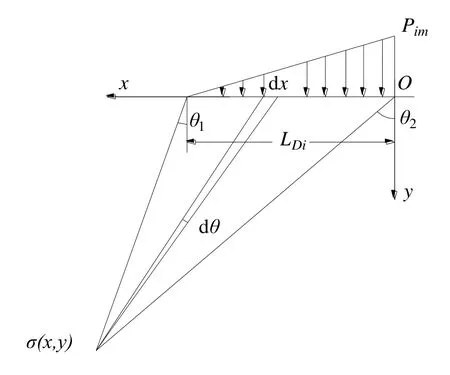
Figure 4: The calculation model of abutment pressure transferring
Let the abutment pressure formed in every stratum be equivalentto triangular zonal load and represent its peak value and distribution width with and respectively. After converting the calculation model into rectangular coordinates, the abutment pressure caused by the ith stratum group in the coal seam can be obtained through the following equation:

(1) The analytical solution of abutment pressure in sagging zone
The peak value and influence range of the abutment pressure formed in sagging zone can be expressed as:

Combine Eqs. (18) and (19), and then the analytical solution of abutment pressure caused by sagging zone can be obtained and expressed as the following equation:

(2) The analytical solution of abutment pressure in fractured zone
The peak value and influence range of the abutment pressure caused by the ith stratum group can be obtained through the following equation:

Combine Eqs. (18) and (21), and then the analytical solution of abutment pressure caused by the ith stratum group in the coal seam can be obtained and expressed as the following equation:
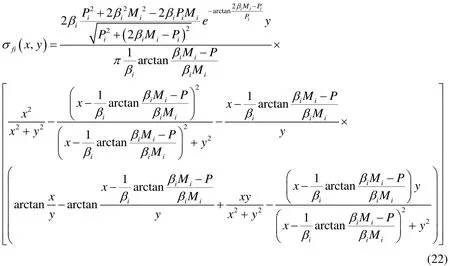
3.2.4 The analysis of lead abutment pressure law in the working face
After deducing the calculation formulas for the analytical solution of abutment pressure formed in every strata group in the working face, a calculation model of lead abutment pressure in 14200 working face can be established according to the discriminant results of key stratum (shown in Fig. 5). Group 1 extends from inferior key strata 2 to the rock mass below main key stratum; Group 2 extends from inferior key strata 1 (main roof) to the rock mass below inferior key strata 2; and the rock body of and above main key stratum (sagging zone) can be seen as another group.

Figure 5: The calculation model of lead abutment pressure in 14200 working face
After calculating the peak value and distribution width of abutment pressure formed below every strata group and giving full consideration to the actual distance between every strata group and coal wall, the calculation results are substituted into Eqs. (20) and(22) respectively. Then the abutment pressure caused by every strata group in coal wall can be obtained. By means of the software “origin”, numerical fitting is conducted,whose results are shown in Fig. 6.

Figure 6: The abutment pressure in strata
It can be known from Fig. 6 that the increase of abutment pressure is composed of three parts:abutment pressure caused by sagging zone, abutment pressure caused by Group 1 Strata, and abutment pressure caused by Group 2 Strata. Abutment pressure caused by Group 1 Strata has a noticeable influence on stress concentration near the coal wall and decides the concentration coefficient of lead abutment pressure. This is mainly because the main roof is relatively close to coal seam and its periodic weighting has a remarkable influence on lead abutment pressure, but meanwhile the range of this influence is relatively short, no farther than 40m ahead of coal wall. Group 2 Strata is composed of inferior key stratum and the strata under its control. Since it is farther away from coal wall than Group 1 Strata, the increase of abutment pressure is comparatively sharper within the range of 0-50 m; it appears relatively mild within the range of 50-100 m, but still greater than the increase caused by Group 1 Strata. This is mainly because the fracture moment of inferior key stratum 2 is larger than that of main roof, thus having a greater influence on lead abutment pressure in coal seam. Sagging zone mainly covers the rock body of and above main key stratum which is relatively far from the coal seam. The distribution of abutment pressure in this zone indicates that although the peak value is not high, its rate of attenuation is relatively low. In other words, the range of its influence is comparatively long, reaching approximately 120 m. Since main key stratum does not break, the range of bending is relatively large and abutment pressure experiences an increase of different degrees deep in the coal seam. This in turn enlarges the influence range of lead abutment pressure directly.
Generally speaking, the distribution of lead abutment pressure under the influence of main key stratum is different from the case in ordinary working face. The difference mainly lies in the influence range of lead abutment pressure. The calculation results of this model indicate that Group 1 strata mainly influence the abutment pressure within the range of 40 m ahead of coal wall. This abutment pressure, integrated with the pressure near the peak value of Group 2 strata, exerts drastic influence on lead abutment pressure which mainly occurs within the range of 50 m ahead of coal wall. The abutment pressure caused by sagging zone and Group 2 strata leads to the rise of abutment pressure to various extents in the coal body beyond the range of 50m ahead of coal wall. In this case,the influence range of lead abutment pressure can be extended even up to approximately 120m. This justifies the noticeable enlargement of influence range of lead abutment pressure under the influence of main key stratum.
4 Field measurement
4.1 Survey equipment and scheme
A mining monitoring system was used to survey the lead abutment pressure in the 14200 working face. To be specific, this system is composed of PZY-60 expansion pressure converter, YHY60 mining Intrinsic-safety pressure gauge, and a bolt-cable pressure recorder(data collector). YHY60 mining Intrinsic-safety pressure gauge can automatically record and store pressure data in the pressure converter all day long. In this case, the technicians do not have to record the data in the mine in person every day. They can use a portable data collector to collect the data in the pressure gauge at certain intervals. Then the data can be input into computers and processed with professional software. After calculation and analysis, the distribution of lead abutment pressure in the working face can be obtained.
During the mining of 14200 working face of Ding-4 mining area, a survey station was set up in the wind road. The station was 160m away from the current mining position and had two survey sites. The horizontal distance between the two survey sites was approximately 1m. The drilling depths of No. 1 and No. 2 site were 10 m and 15 m,respectively. All the drill holes were 1 m higher than the floor and arranged in the coal body parallel to the floor, as is shown in Fig. 7.
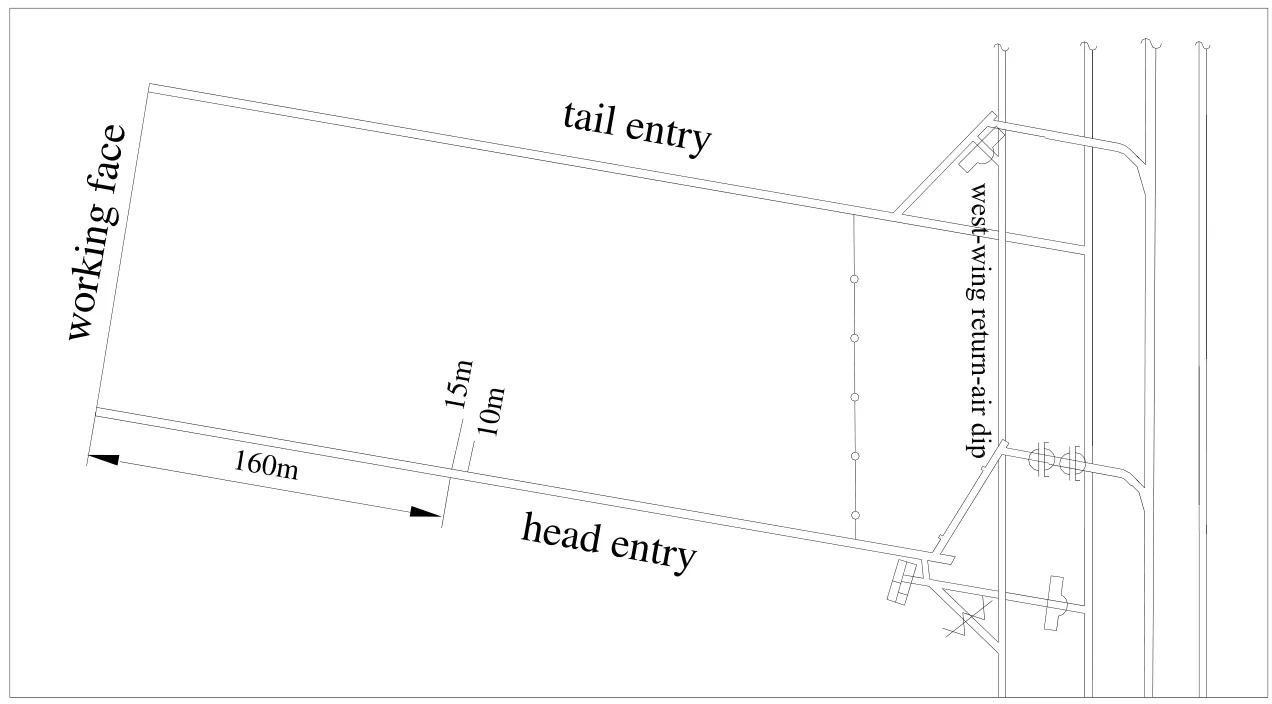
Figure 7: The plane graph of survey sites
4.2 Survey results and analysis
The pressure data were collected with data collector and input into computer. By means of drawing software, the distribution of abutment pressure in the mining process was drawn as follows:
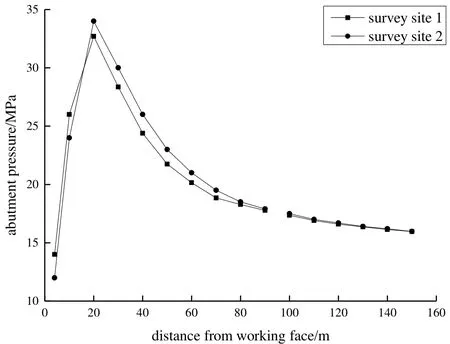
Figure 8: The distribution of abutment pressure in working face
From the above figure it can be seen that when the two survey sites are 160 m away from the working face, the abutment pressure is approximately 15.8 MPa, quite close to the primary rock stress. With the advancement of mining position, the abutment pressure increases mildly. When the distance between the mining position and survey sites is approximately 120 m, the abutment pressure begins to increase faster than before and reaches to approximately 16.7 MPa. When the distance between the mining position and survey sites is approximately 100 m, the abutment pressure witnesses a sharp increase,indicating that the survey sites are within the range of noticeable influence. When the distance between the mining position and survey sites is approximately 19 m, the abutment pressure reaches the peak value. At No. 1 survey site, the peak value is 32.5 MPa; at No. 2 survey site the peak value is 34.2 MPa. After the peak value, the abutment pressure drops rapidly. When the distance between the mining position and survey sites is approximately 3 m, the abutment pressure at the two survey sites is 14.2 MPa and 12.1 MPa, respectively.
The above analysis indicates that the peak value of abutment pressure in the 14200 working face appears at the location which is 19 m ahead of the current mining position.The stress concentration coefficient reaches up to 2.28. The overall influence range of lead abutment pressure extends to 120 m and the range of noticeable influence reaches up to 100 m. The results of field measurement are consistent with those of theoretical calculation.
5 Conclusion
(1) Based on key stratum theory and elastic foundation beam theory, this research established a structural model of lead abutment pressure under the influence of main key stratum. The abutment pressure on the rock mass below caused by sagging zone and fractured zone was calculated respectively. Then the analytical solution of lead abutment pressure in the working face under the influence of main key stratum was obtained with superposition method. Meanwhile the law of lead abutment pressure was analyzed.
(2) With the mining conditions of the 14200 working face in Ding-4 mining area as the background, this research calculated the distribution law of lead abutment pressure by means of the model established. The results indicate that the overall influence range of lead abutment pressure extends up to 120 m under the influence of main key stratum; the range of noticeable influence also extends up to 100 m. The results are highly consistent with the survey of mine pressure and verify the accuracy of the calculation model established.
Acknowledgement:This research is supported by the National Natural Science Foundation of China (51874289) and the National Key Research and Development Program of China (2018YFC0604705) and the Fundamental Research Funds for the Central Universities 2018ZDPY05. There is no conflict of interest regarding the publication of this paper.
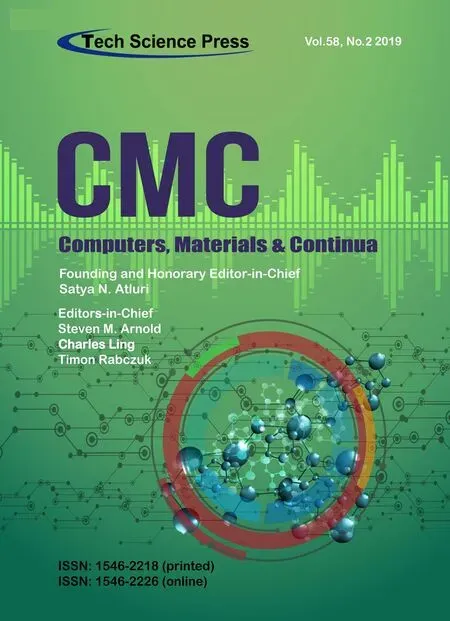 Computers Materials&Continua2019年2期
Computers Materials&Continua2019年2期
- Computers Materials&Continua的其它文章
- Optimization Algorithm for Reduction the Size of Dixon Resultant Matrix: A Case Study on Mechanical Application
- A Lightweight Three-Factor User Authentication Protocol for the Information Perception of IoT
- Online Magnetic Flux Leakage Detection System for Sucker Rod Defects Based on LabVIEW Programming
- Design of Feedback Shift Register of Against Power Analysis Attack
- Social-Aware Based Secure Relay Selection in Relay-Assisted D2D Communications
- Detecting Iris Liveness with Batch Normalized Convolutional Neural Network
